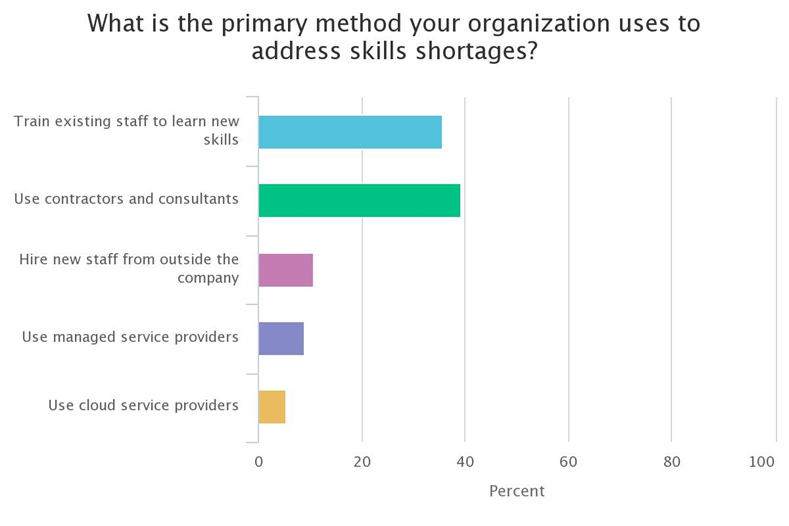
The rapid pace of digital transformation has created serious IT skills shortages, and organizations are finding it difficult to recruit staff to fill the gaps. Here’s how they’re dealing with the shortage.
How do organizations address IT skills shortages?
Skills shortages can be addressed from both within and outside enterprise walls, according to 451 Research’s Christian Perry, who recently presented The Impact of Digital Transformation on Infrastructure Teams, a 451 Alliance members-only webinar.
The attendees were polled during the webinar to find out how their organizations are addressing skills shortages. The two primary methods cited by the respondents were using contractors and consultants (39%) and training existing staff (36%).

Perry noted that many organizations think of contractors and consultants as another arm of their IT team. They can work very successfully with enterprise IT staff to provide the needed skills.
Organizations are also increasingly training existing staff to learn new skills, which benefits both the organization and the staff. While many of these internal training programs are not mandatory, attendance is often “nearly standing room only among infrastructure personnel who are asked to join these training sessions. Many infrastructure personnel realize that they may not survive as a specialist moving forward.” Versatility and adaptability are key to a successful IT staffer’s professional development.
Only 10.7% of respondents planned to hire new staff to fill skills gaps – a far lower percentage compared to training up current staff and outsourcing to a contractor.
This is not what Microsoft, Amazon, and Google would like to see, but it’s the ultimate reality in the age of on-prem IT transformation.
Why not move to the cloud?
The shortage is not so dire as to push companies to adopt cloud or managed service providers due to skills gaps; maintaining control over your own IT infrastructure is still too important.
Perry admits that “this is not what Microsoft, Amazon, and Google would like to see, but it’s the ultimate reality in the age of on-prem IT transformation: the enablement of IT teams to transform internally and to do so at a quick enough pace to come up to speed with cloud.”
Want to learn more?
Watch the recording of The Impact of Digital Transformation on Infrastructure Teams and all other 451 Alliance webinars on our member website.
Not a member? Apply to join the 451 Alliance.

